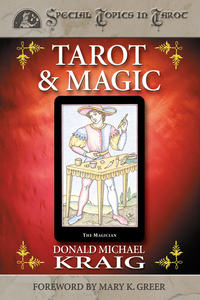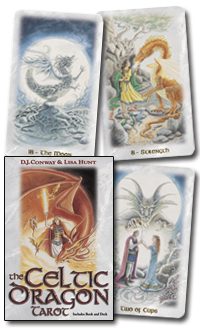Finding Treasure
I love books. My house is more like a library with a bedroom than a home with books. So I read lots of books. And the truth is, some of them are not very good. Okay, some of them are really bad. Some of them have me thinking, “Well, that’s several hours I’ll never have back again!”
But when it comes to non-fiction books, there’s an added dimension to this. Even if you think a book is not good, reading it and correcting errors in your mind proves you know more than the author. To my way of thinking that’s a great thing. Every book you read either adds to the knowledge you possess or proves you have a great deal of knowledge already. So in reality, when it comes to occult and magick books, none of them are ever “bad.” They all teach you something new or reveal what you already know.
However, it is rare for a book to be 100% fantastic all the way through or 100% terrible. Let me give you a couple of examples.
I have a book that makes the amazingly bizarre claim that Tantra, a spiritual system that developed in ancient India, is actually from inhabitants of a distant star. This is not only factually false, it’s also insulting. It assumes that we poor humans are morons incapable of developing a magnificent spiritual system on our own. Stupidest. Concept. Ever. However, there are some exercises in the book that are really good. I consider them a treasure I found hidden in a pile of garbage.
I remember reading another book on spirituality. One of the problems I have with some books of this type is that they use all sorts of terms without defining them. As a result, the books are meaningless tripe that seem to have good messages but ultimately say nothing. In the middle of this book, however, there was a technique for a group meditation that was specific and quite good. It focused on how to develop and direct group energies. I consider it aAnother treasure found within a pile of garbage.
Treasure Within Other People’s Treasures
Just because something is “not my cup of tea” doesn’t mean it’s bad; it just means it’s not for me. Some people prefer one author or another. That doesn’t mean one author is bad and another good, it just means that people have preferences.
This morning, I started looking at the combination Tarot deck and book set, The Celtic Dragon Tarot Kit.
The art, by famed fantasy artist Lisa Hunt, is etherial and dreamy. It shows passion and insight with several nice little twists such as the magician being a woman. This would be a perfect deck for lovers of Game of Thrones. The King of Wands, for example, has a small dragon perched on the king’s hand as if it were a falcon. It reminds me of scenes of Daenerys and her dragons.
So lots of people love and use this deck regularly. It’s clever, beautiful, perfect for fans of Game of Thrones or for anyone who likes dragons.
But I’m not a dragon guy.
I don’t have anything against dragons. They’re just not for me. I wouldn’t regularly use this deck—not because it is in any way “incorrect” or “bad,” but simply because it’s not my style. If you have any interest in dragons this could be your cup of tea. It’s just not mine.
So why do I have this deck and keep it around? Because there are treasures that I like that can be found within the treasures someone else likes. In this case my treasures are found within the book that comes in the kit, A Guide to the Celtic Dragon Tarot by D. J. Conway with illustrations by Lisa Hunt. Naturally, the book includes information on the symbolism of each card and their divinatory meanings. Personally, I think it’s great having a full book accompany a deck as it can go into far more detail than the (in)famous “Little White Booklet” that is normally all you get with many decks.
For me, however, the treasure is to be found in chapters five and six.
Chapter Five provides four Tarot spreads. The first is an expansion on the famous Celtic Cross spread. It shows how to add extra cards to this reading to obtain added specifics. There is also a fascinating technique for determining how the effects of past lives is affecting you now. This spread doesn’t reveal how to deal with those issues, it merely reveals them. If the cards told you what to do it would be disempowering. By giving you more information and letting you come to your own solution it is empowering. As Conway writes, “This layout requires much introspection.” Indeed it does, and it can be quite fruitful.
My favorite is the fourth spread. It’s called “Path to a Goal.” For me, it’s related to flying a plane.
The Problem with Flying a Plane
I’ve flown to Hawaii from California to give workshops on several occasions. You may think that modern jets simply get a bearing and fly in the correct direction. But that’s not the way it works. Due to winds and other issues, planes are constantly pushed off their desired courses. It may take a while to show up, but every so often the pilot (or the computers) have to make adjustments and change course. If you don’t do that, the plane could end up in the wrong location. Even a one degree error could result in the Los Angeles to Hawaii flight ending up in the middle of the Pacific Ocean.
This means that for the pilot to achieve his or her goal of landing in a specific airport in Hawaii, two things are needed. First, you need feedback. How close are you to the desired flight path? Second, you need to be able to make adjustments so you’ll end up at your goal.
There are two things that people with specific goals often fail to do. Sure, they make great plans to achieve goals, but they don’t listen to feedback and make adjustments on the way to the goal. That would be like a cross country driver thinking, “Hmmm. It’s late at night and I’m tired. The road is straight. I can shut my eyes and just keep the car going ahead…” Generally, the result of such a decision in not a positive one.
So let’s say you have a goal and are on your way to achieving it. How do you become aware of the necessary feedback so you can make adjustments to get on the right course? One way is to use this wonderful spread. It’s simple, direct, and elegant.
Chapter six includes fifteen simple magick spells using the Tarot and candles. This is an excellent addition to my section on the same subject in Tarot & Magic.
So although I don’t regularly use the Celtic Dragon Tarot deck, I know that some people will consider it a wonderful treasure. And within their treasure I found some treasures that I will and do use.
I have found treasures in products that I think are other people’s treasures, and I’ve found them in books that, well, I wouldn’t otherwise recommend for anyone. So even if someone tells you that a book is bad, I would suggest that you at least go through it. You never know what treasures you may find or where they may be hiding.
Have you found a treasure in some book that otherwise you would have ignored? Share it in the comments section.










